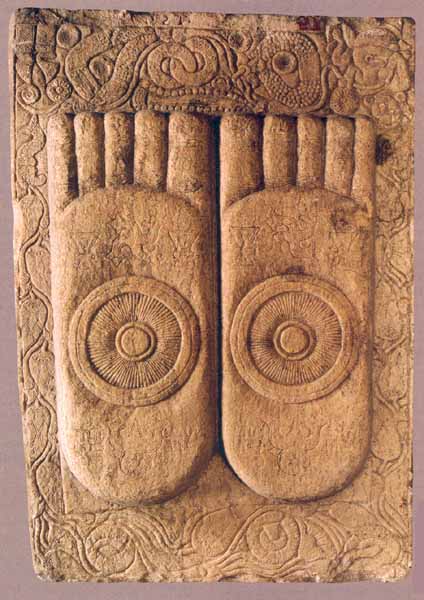
This first century B.C. limestone relief from India represents the Buddhapada, the footprints of the Buddha. Born sometime in the sixth century B.C., Siddhartha Gautama was a prince of the Sakya clan of northeastern India; he became the Buddha, which means “enlightened one,” after he renounced his life of privilege and comfort and devoted his life to meditation. Before the first century A.D., the Buddha was never represented as a human figure in Indian sculpture; instead artists represented him indirectly or through symbols.

The feet of gods and gurus have long been an object of veneration in India. Still a very common motif in Buddhist iconography, Buddhapada show that, although the Buddha had escaped the net of worldly suffering and ignorance in which all other beings are trapped, his feet were still firmly planted on the ground. They remind Buddhists that the founder of their faith was a real person who walked among his fellow men and left behind a path of liberation that ordinary people could follow. Footprints also signify that the one who made them is no longer present: The passing-away of all things is a central tenet in Buddhist philosophy.
Already a library member? Log in here.
Institution user? Log in with your IP address.

